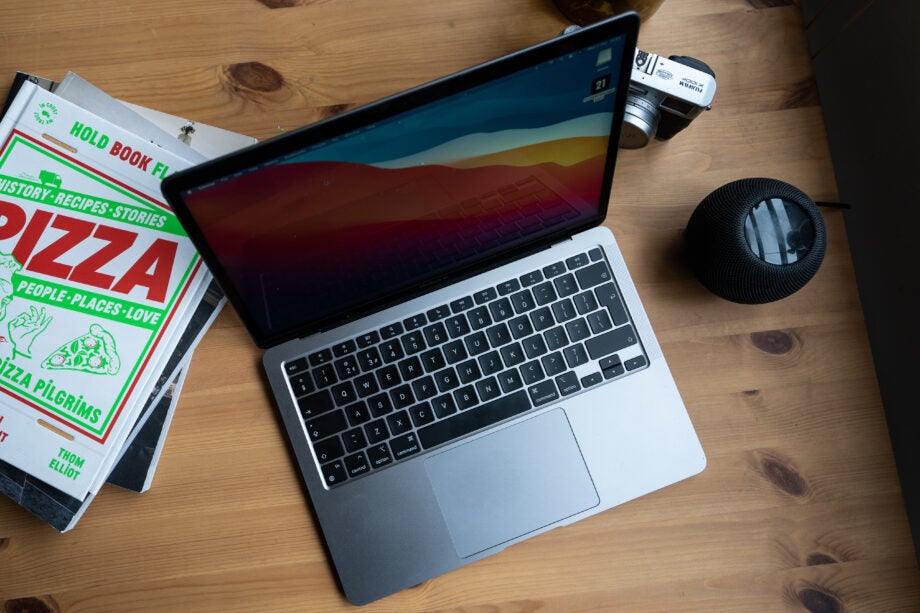Laptops in 2021: What new innovations can we expect?

We’ve seen a huge number of incredible laptops in 2020, from Apple’s ground-breaking MacBook Air with M1 chip to Asus’ incredibly lightweight Zephyrus G14 gaming laptop. But these aren’t exceptions to the rule, as every laptop manufacturer stepped up its game thanks to some amazing innovations.
We’ve seen gorgeous new designs, outstanding new Arm-based systems and numerous sleek ultrabooks packing enough graphical grunt to game on the go. But what’s in store for the laptop industry in 2021?
We’ve compiled a list of some of the most exciting laptop innovations that we can expect from 2021, some of which are educated guesses and others that are merely wishful thinking. So let’s get to it:

Arm-based laptops could invade the entry-level market
Arm architecture has been around for a very long time, but 2020 represented one of the very first years that it made a big presence in laptops. While we, of course, know Apple is switching over to Arm, we also saw the likes of Lenovo and Samsung dabble with the technology. Sadly, the poor compatibility with Windows 10 caused a lot of technical hiccups, but Microsoft has vowed to fix this with Windows 10X.
Related: What is an Arm processor?
Once Microsoft does address this issue, I can see manufacturers for entry-level laptops jumping at the opportunity to use Arm processors since they can allow for thinner designs and longer battery life. The likes of the Samsung Galaxy Book S proved how beneficial such upgrades can be, especially for those who champion portability above all else.
But while Windows-based laptops will be more hesitant in embracing Arm for the time being, it feels like an open goal for Chromebooks. The Acer Chromebook Spin 513 has already been confirmed to feature an Arm-based Qualcomm Snapdragon 7c processor, and hopefully shouldn’t suffer any software issues since its running on Google’s ChromeOS. Google has been working with Arm technology in the smartphone space for years now, so it’s better placed than any company to get laptops playing nice.
New mobile GPUs from AMD and Nvidia
It looks like 2021 will be a massive year for gaming laptops, with AMD and Nvidia expected to launch mobile GPU variants of the Big Navi and Ampere graphics cards. Such a move would make 4K support and ray tracing the norm for high-end laptops, while possibly also seeing supremely high frame rates that will make a big difference to competitive shooters.
But don’t be dismayed if those GPUs will be out of your price range. We expect that AMD and Nvidia will also announce more budget-friendly laptop GPUs, providing additional options in the 1080p market. We’ve seen powerful gaming laptops such as the Asus ROG Zephyrus G14 become slimmer and lighter than ever before, and we expect this trend to continue in 2021.
Non-gaming notebooks are also expected to see a big graphics upgrade, with Intel’s Tiger Lake chip becoming the norm and AMD gearing up to launch its Ryzen 5000 mobile processors, both of which should have enough grunt to play eSport titles in 1080p resolutions.
Related: Best Gaming Laptop

Mini LED technology could make laptop screens look even better
Laptops will not only become more powerful in 2021, but could also have better looking screens. Mini LED panels are starting to trickle into the laptop industry, offering superior contrast and deeper blacks compared to your conventional LCD display.
The MSI Creator 17 became the very first laptop to feature a Mini LED display in 2020, and now it’s looking likely that other manufacturers are ready to embrace the technology. There are lots of rumours that Apple is keen to introduce a Mini LED panel to the upcoming MacBook Pro 2021, which will likely increase the demand even further.
The big caveat here is that Mini LED laptops will likely demand a very high price, so we’ll probably only see them appear in high-end creator-focused systems to begin with. But like any new technology, it will eventually trickle down to more affordable models which is an exciting prospect.
More 5G laptops for on-the-go web browsing
In 2020 we saw 5G become the norm for mid-and high-end smartphones. In 2021 it’s the laptop’s turn to embrace support for cellular networks, with the Samsung Galaxy Flex 5G already confirmed to feature 5G thanks to Intel’s new Tiger Lake chip.
With the floodgates now open, we expect many more laptops to follow suit and embrace 5G, allowing users to continue browsing the web when away from their Wi-Fi router. This could be a very useful feature for those who like to travel or even work from a café, bidding goodbye to dodgy public Wi-Fi networks.
Of course, the biggest issue here is the requirement of SIM cards, which aren’t traditionally bundled with laptops and can be very costly. This means it’s currently unknown whether 5G laptops will be a success, but it will still be very fascinating to see them hit stores.
Related: Best Laptop 2020

Death to the bezel!
Laptop design has come a long way in the past 12 months, with the majority of manufacturers opting for super-skinny bezels for a more sophisticated look. The Dell XPS laptops are arguably the best looking of the lot though, with an ‘InfinityEdge’ design squeezing the bezel down to such an extent that it’s no longer visible on the four edges of the screen.
The benefits aren’t solely aesthetical either, as it allows Dell to increase the screen size without making the laptop larger. With lightweight and slim designs undoubtedly an important trend in the laptop these days, squashing down the bezel makes a lot of sense.
We’re hoping that 2021 will be the year that the likes of Acer, Asus, Lenovo, Microsoft and even Apple catch up with Dell in the looks department. We’ve been pining for a MacBook Air with a teeny-weeny bezel for ages now, and we’ve got our fingers crossed that 2021 will put an end to that wait.
Dual-screen laptops will finally launch
Laptops with dual screens have been teased for a long time now, with Microsoft unveiling the Surface Neo as far back as 2019. Sadly, Microsoft ended up delaying the Neo to 2021.
Windows 10X has been cited as a big reason for the Neo’s delay, as Microsoft made it a priority to get Windows 10X running well on single-screen devices before moving on to dual-screen systems.
But with the Surface Neo and Windows 10X both expected to arrive in 2021, this looks to be year when we finally get our hands on dual-screen laptops. Such devices may only be viable for cash happy computer enthusiasts initially, but just seeing one out in the wild is exciting enough.


